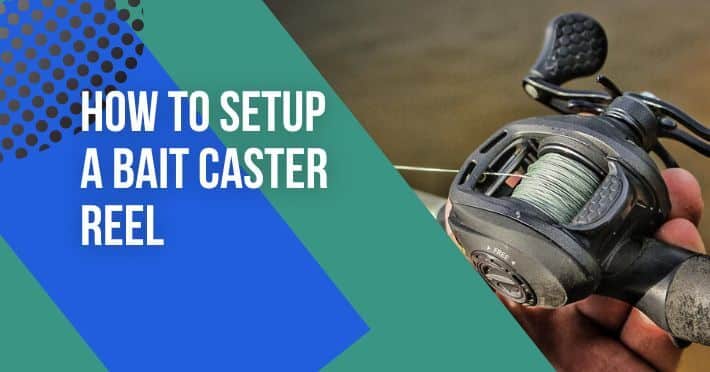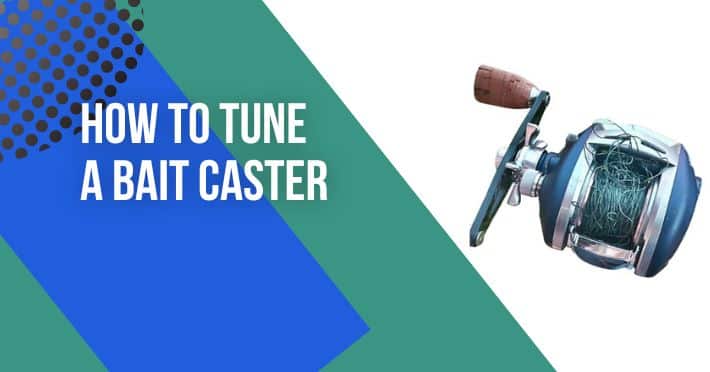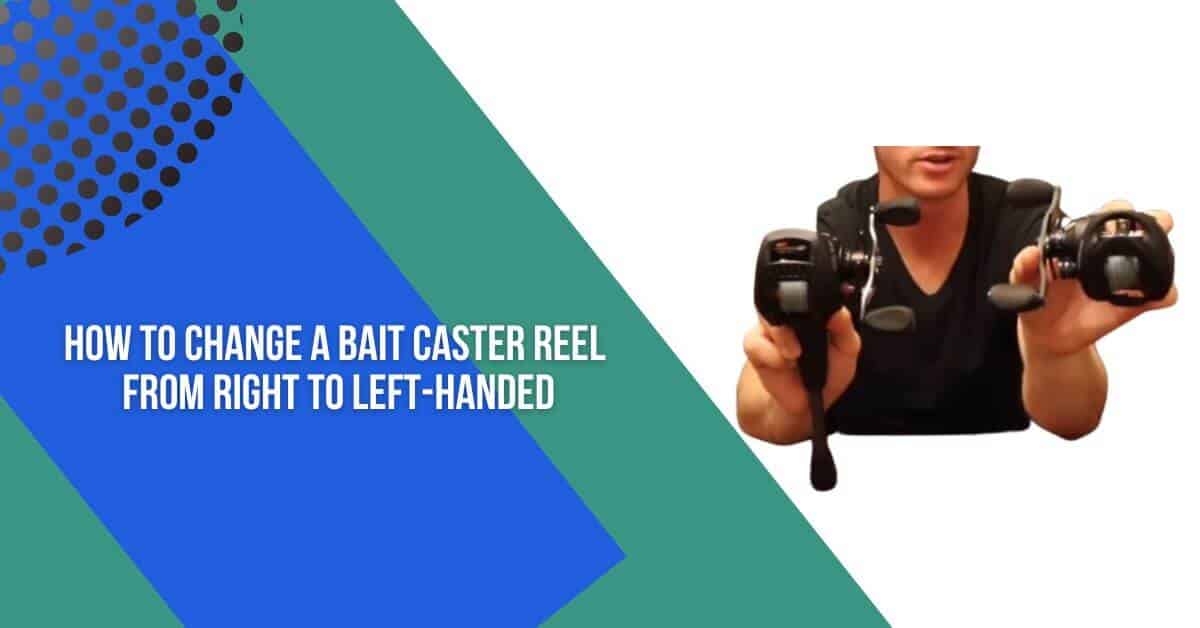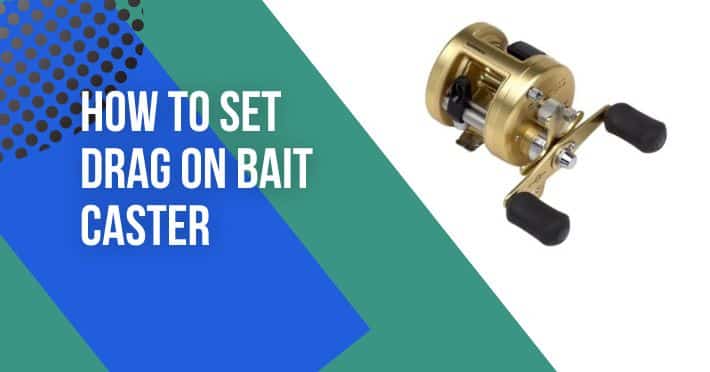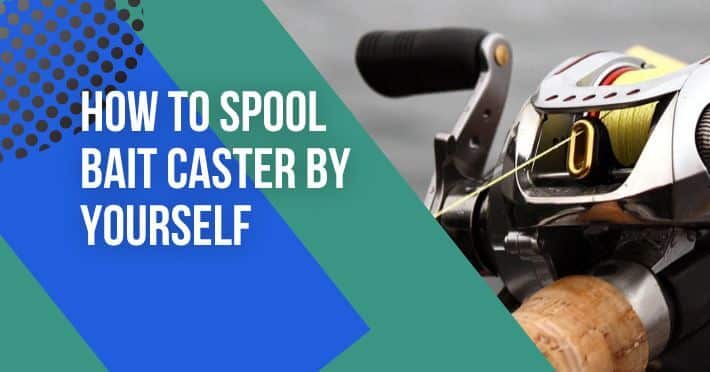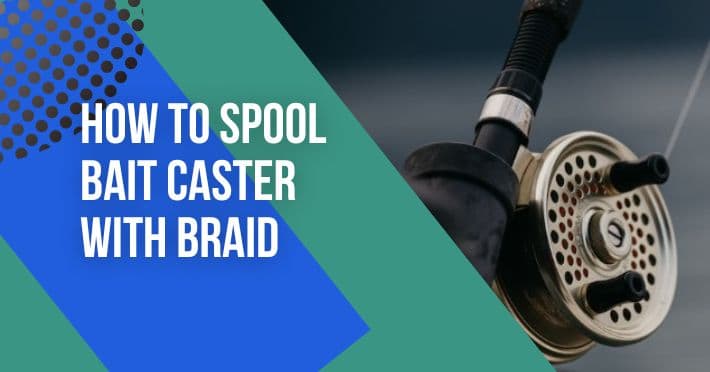Contents
- 1 How To Set Up A Bait Caster Reel
- 2 Mount The Reel On The Rod
- 3 1. Find The Reel Seat At The Base Of The Rod.
- 4 2. Open The Locking Mechanism Of The Reel Seat By Twisting The Hood Or Pressing The Button.
- 5 3. Glide The Foot Of The Reel Into The Reel Seat.
- 6 4. Create Certain The Reel Is Placed Perfectly With The Drag Command Facing Away From The Rod.
- 7 Adjust The Brakes
- 8 1. Check The Brakes
- 9 2. Adjust The Magnetic Brakes
- 10 3. Adjust The Centrifugal Brakes
- 11 4. Test The Brakes
- 12 5. Repeat The Process
- 13 Line The Reel
- 14 Adjust The Spool Tension
- 15 1. Locate The Spool Tension Knob
- 16 2. Cast The Bait
- 17 3. Adjust The Spool Tension
- 18 4. Test The Reel
- 19 Test The Setup
- 20 Practice Casting
- 21 Pro Tips And Techniques For Setting Up A Baitcaster Reel So It Doesn’t Backlash
- 22 Tips For Using A Bait Caster Reel Without Backlash:
- 23 Outline For Experienced Anglers:
- 24 Advanced Steps To Set Up A Bait Caster Reel:
- 25 Tips For Reducing The Risk Of Backlash:
- 26 Outline For Tournament Anglers:
- 27 Steps For Tournament-Level Setup Of A Bait Caster Reel:
- 28 Tips For Reducing Backlash During The Competition:
- 29 Outline For Saltwater Anglers:
- 30 Steps To Set Up A Bait Caster Reel For Saltwater Fishing:
- 31 Tips For Avoiding Backlash In Saltwater Fishing:
- 32 Outline For Night Fishing:
- 33 Steps For Setting Up A Bait Caster Reel For Night Fishing:
- 34 Tips For Reducing Backlash While Night Fishing:
- 35 Conclusion
- 36 FAQs
- 37 How to set up a bait caster for beginners?
- 38 How to set up a bait caster reel with a braid?
- 39 How to set up a bait caster reel for bass fishing?
A bait caster reel is a type of fishing reel that is commonly used for various fishing techniques, including casting, jigging, and trolling. Setting up a bait caster reel properly is crucial for achieving accurate casts and preventing line tangles. This guide will cover the basics of how to set up a bait caster reel, including adjusting the brake system, setting the spool tension, and adjusting the drag.
Every bait caster reel is different, so make sure to consult the manufacturer’s manual for specific instructions on how to set up your particular reel.
How To Set Up A Bait Caster Reel
Go fishing art gathered one of the most experienced and experts’ chosen steps to set up a bait caster reel. Here are written below to guide our beginner fishers:
Mount The Reel On The Rod
Here are the steps which can help you in finding your answer to How to set up a bait caster reel;
1. Find The Reel Seat At The Base Of The Rod.
The reel seat is a component of a fishing rod that securely holds the fishing reel in place. It is typically located at the base of the rod and is designed to provide a firm grip on the reel while allowing for easy removal and attachment. The reel seat often includes locking mechanisms, such as screw-down caps or sliding hoods, to ensure a secure connection. The material used to construct the reel seat can vary, with options including aluminum, graphite, or cork.
2. Open The Locking Mechanism Of The Reel Seat By Twisting The Hood Or Pressing The Button.
To open the locking mechanism of a reel seat, there are typically two methods that can be used – twisting the hood or pressing the button and will help you to get the answer of how to set up a bait caster reel.
3. Glide The Foot Of The Reel Into The Reel Seat.
Major anglers ask how to set up a baitcaster reel so that to glide the foot of the reel into the reel seat, the angler needs to gently insert the bottom of the fishing reel into the open end of the reel seat on the fishing rod. The foot of the reel should be lined up with the grooves or guides on the reel seat to ensure proper placement.
Then, while holding the reel steady, the angler should apply gentle pressure until the foot of the reel clicks or snaps into place, securing the reel to the rod. This process can help you in getting an accurate response of how to set up a baitcaster reel vary slightly depending on the specific reel and rod, but the overall goal is to ensure that the reel is properly seated and secure before use.
4. Create Certain The Reel Is Placed Perfectly With The Drag Command Facing Away From The Rod.
To ensure that the reel is placed perfectly with the drag facing away from the rod, follow these steps:
Adjust The Brakes
Baitcaster reels have centrifugal or magnetic brakes to control spool speed. Turn the adjustment dial to set up a baitcaster reel or toggle switch to increase or decrease the braking force. Although, go fishing art is writing some of the most expert fishing tips for adjusting the brakes. Do read it now below;
1. Check The Brakes
Before adjusting the brakes, it’s important to check if they are functioning properly. Spool the line and apply pressure to the line, if the brakes are functioning, the spool should stop or slow down.
2. Adjust The Magnetic Brakes
Most baitcaster reels have adjustable magnetic brakes that control the speed of the spool. These brakes can be adjusted by turning the dial or adjusting screws.
3. Adjust The Centrifugal Brakes
Baitcaster reels also have centrifugal brakes that slow down the spool as it spins. To adjust these brakes, you can add or remove brake blocks.
4. Test The Brakes
After making the adjustments, test the brakes by spooling the line and applying pressure to the line. If the spool stops or slows down as desired, the brakes are correctly adjusted.
5. Repeat The Process
If the brakes still don’t work as desired, repeat the process until you get the desired results. It may take a few adjustments to get the perfect brake setting for your reel.
Line The Reel
A baitcaster reel, also known as a low-profile reel, is a type of fishing reel that sits atop a fishing rod and is used for casting heavier lures or baits. The line on a baitcaster reel is wound onto a spool that is mounted on a revolving spindle. The spool rotates during the casting process, releasing the line, and allowing the angler to make longer, more accurate casts.
The amount of line that is released is determined by the angler’s thumb, which controls a brake system on the reel. This brake system helps prevent the spool from rotating too quickly, which can cause “backlash,” or tangles in the line. To set up a baitcaster reel should be loaded onto the spool evenly and tightened to the appropriate tension to prevent backlashes and improve casting accuracy.
Adjust The Spool Tension
1. Locate The Spool Tension Knob
This is usually located on the top of the bait caster reel and can be adjusted by turning it to the right or left.
2. Cast The Bait
Cast the bait and observe how it performs in the air. If the spool spins too much and causes a “bird’s nest” or tangles, then the spool tension is too loose. If the spool doesn’t spin enough and causes a poor cast, then the spool tension is too tight.
3. Adjust The Spool Tension
Turn the spool tension knob to the right if the spool is too loose, or to the left if the spool is too tight. Test the cast again to see if it has improved. Repeat this step until you find the optimal tension.
4. Test The Reel
Keep making casts until you feel confident in the reel’s performance. Adjust the spool tension as needed until it works to your satisfaction.
Test The Setup
To set up a baitcaster reel, hold the rod vertically and gently flick the bail arm open. The line should come off the spool evenly and without any bird nests. If not, adjust the brakes or spool tension as needed.
Practice Casting
Make a few practice casts to get the feel of the reel and fine-tune the settings. Remember, a baitcaster reel takes some time to get used to, so be patient. Here are some more points which should be in mind before practicing casting;
Pro Tips And Techniques For Setting Up A Baitcaster Reel So It Doesn’t Backlash
Here, we are discussing some of the most experienced and pro tips for avoiding backlash in your fishing journey. I bet you! If you apply this in your journey of fishing you’ll be mesmerized by the outcomes and you will never ask how to set up a baitcaster reel, again.
Tips For Using A Bait Caster Reel Without Backlash:
Outline For Experienced Anglers:
Some of the important useful points for experienced anglers are written below which can lead you to get the best reply for how to set up a baitcaster reel.
Advanced Steps To Set Up A Bait Caster Reel:
Here you can find some of the most experienced fishing lineup setups and some shorts will also enhance your ability of fishing.
Tips For Reducing The Risk Of Backlash:
Outline For Tournament Anglers:
Some of the important useful points for tournament fishers are written below;
Steps For Tournament-Level Setup Of A Bait Caster Reel:
Tips For Reducing Backlash During The Competition:
Outline For Saltwater Anglers:
Some of the important useful points for saltwater anglers are written below;
Steps To Set Up A Bait Caster Reel For Saltwater Fishing:
Tips For Avoiding Backlash In Saltwater Fishing:
Outline For Night Fishing:
Some of the vital and significant attributes regarding night fishing are written below. It also helps in getting you the best queries related to answers on how to set up a bait caster reel.
Steps For Setting Up A Bait Caster Reel For Night Fishing:
Tips For Reducing Backlash While Night Fishing:
Conclusion
Hope you get the best results for your queries about how to set up a bait caster reel, now go fishing art is closing the article with the content we have given to our readers. In conclusion, setting up a bait caster reel requires a few uncomplicated actions to provide optimal execution.
Willingly, you need to pick the right line capability for your reel and fill it with the reasonable part of the line. For this course, you should have the details of how to set up a bait caster reel. To find out the solution, reach out to the first area of the article to find out more.
Then, you should adjust the spool tension and set the brakes according to the significance of your lure. Ultimately, you should fine-tune and get an explanation of how to set up a bait caster reel, to cast the management settings to manage the length and accuracy of your casts. With these grades in sense, you will be able to efficiently set up your bait caster reel and enhance your fishing adventure.
FAQs
How to set up a bait caster for beginners?
Some of the important useful points for beginners are written below;
Steps to properly set up a bait caster reel to prevent backlash:
Choose the right line for your reel.
Adjust the spool tension.
Adjust the brakes.
Set the cast control knob.
How to set up a bait caster reel with a braid?
Placing up a baitcaster with a braided line can be done in the subsequent measures. For this procedure, you have the knowledge of how to set up a baitcaster reel. To find out the answer go in the first section to find out more;
Spool your bait caster with the expected piece of braided line, making it foolproof to go about 1/8 inch of space from the lid of the spool.
Connect a monofilament or fluorocarbon leader to the end of the braid, using a two-uni knot or a fisherman’s knot. The leader should be about 6 to 12 inches long and have an infringement strength that’s just lower than your braid.
Knit the line through the rod manuals, beginning from the tip and operating your way down to the reel.
Place the end of the leader into the line, focus on the reel and tighten the drag so the line doesn’t slip.
Connect the end of the leader to the hook or lure you’ll be using.
How to set up a bait caster reel for bass fishing?
Set Up a baitcasting reel: A high-quality, long-lasting baitcasting reel is important for bass fishing.
Baitcasting rod: A medium-heavy power baitcasting rod with fast action is ideal for bass fishing.
Line: Monofilament or fluorocarbon line with a test strength of 10-20lb is appropriate for bass fishing. Decide a line that is low in the stretch and has acceptable knot solidity
Lures: A variety of soft plastics, crank baits, spinner baits, and top-water lures are essential for bass fishing. Test with various lures and colours to find what works best in your fishing conditions.

